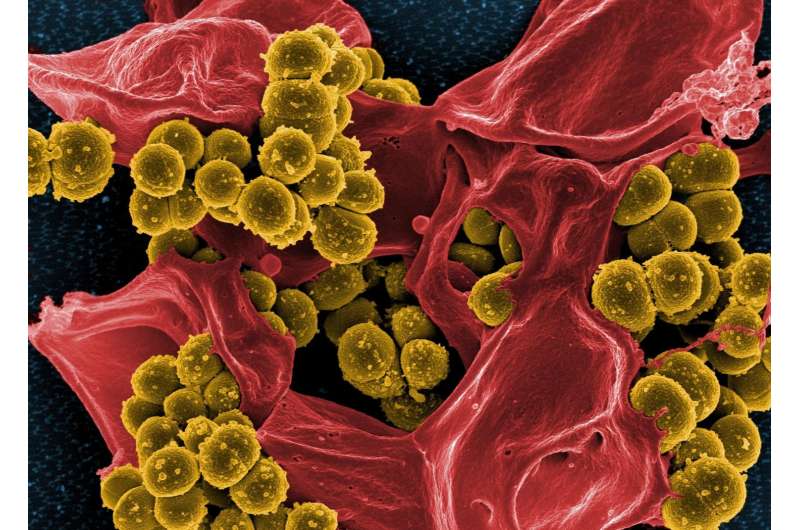Imaging host-pathogen battle for metal

Bacterial pathogens require nutrient metals to survive and cause disease, and hosts try to protect themselves by hiding metals away—a process called "nutritional immunity." Bacteria have evolved multiple strategies for getting the metals they need, including the secretion of small molecule metal-binding "sponges" called siderophores.
Eric Skaar, Ph.D., MPH, Richard Caprioli, Ph.D., and colleagues have now used multi-modal imaging mass spectrometry to map two iron-binding siderophores of Staphylococcus aureus ("staph") during infection in mice. They found differences in production of the two siderophores across staph abscesses in various tissues, suggesting niche-specific roles and challenging the idea that the host is uniformly iron-depleted.
The study, published in the Proceedings of the National Academy of Sciences, offers an unprecedented view of the struggle for metal between host and pathogen. The ability to image bacterial products such as siderophores within infected tissues opens new opportunities to explore infection biology and devise novel therapeutic strategies.
More information: William J. Perry et al. Staphylococcus aureus exhibits heterogeneous siderophore production within the vertebrate host, Proceedings of the National Academy of Sciences (2019). DOI: 10.1073/pnas.1913991116
Journal information: Proceedings of the National Academy of Sciences
Provided by Vanderbilt University




















